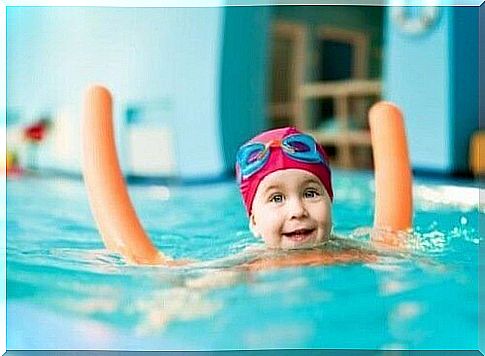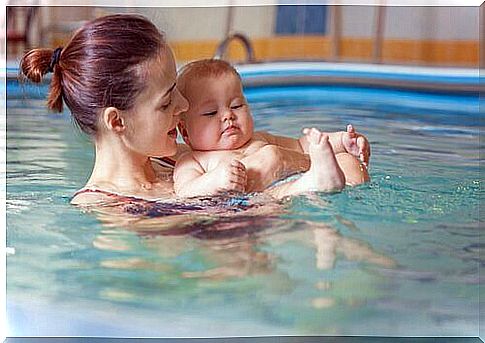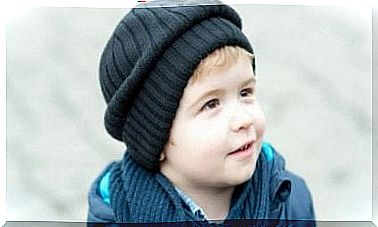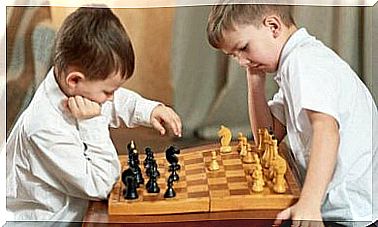7 Tips To Teach Children To Swim

It is vital to teach children how to swim. Swimming is not only fun, but it also prepares them for emergencies in the water. It also has great physical and intellectual benefits for children’s development.
7 tips to teach children to swim from a young age
Many children go into the water naturally, while others are a little more afraid. With some simple tips, you can teach your kids to be excellent swimmers.
1. Make sure they are comfortable so they are not afraid

To make children feel comfortable, you can add some support. Using floats or swimming rings will help them adapt to the water. This will help them get used to this new environment, which is completely different from the land.
2. Children learn to swim: start where the water doesn’t rise above their heads
Make sure you start where your child can stand. This makes him feel safe. The biggest problem for children learning to swim is their fear of drowning.
If your child starts crying and doesn’t want to go into the pool, don’t force it. You can encourage him to get in the water when you’re in the water yourself. However, if your child continues to cry, don’t force him until he’s ready.
3. Teach Them To Make Bubbles In The Bathtub
To teach children to swim, you can practice breathing in the bathtub. Have them inhale above the water and exhale through their mouths into the water. This shows them how to make bubbles. While this is a fun game to play, it is actually an exercise for learning to swim.
4. Put their heads in the water
After they are familiar with the bubbles, ask your kids to put their faces in the water while they are making bubbles. The first time they may be surprised or nervous. Once they see the bubbles and nothing bad happens, their fear will disappear. If they are afraid of seeing bubbles coming out of their noses, have them look to the side.
5. Teach Them To Move Their Legs
Hold them gently by their stomach. Help them stay horizontal while moving their legs. In the beginning, children lower their bodies and legs. When the time is right, you can take your hands off their stomach without them noticing.
6. Breathe and use legs at the same time
Now it’s time to coordinate the two exercises. They can move their legs and make bubbles. Hold them by the armpits and ask them to do both things at once.
7. Let them try it themselves
When they can do both exercises at the same time, you can let go for a few seconds. This way, your kids can see that it’s easy to do it alone.
However, you have to be patient while they are learning it. They will not learn to swim overnight.
Benefits of teaching your children to swim from an early age
There are many benefits to teaching children to swim. Obviously, the main one is that it can save their lives in a dangerous situation.
Swimming also helps them to:
- Train, develop and strengthen almost all muscles of the body.
- Increase lung capacity.
- Stimulate blood circulation.
In addition, it promotes coordination, motor skills and body reflexes. Swimming undoubtedly helps your child to grow and develop in a healthy way.
Precautions for when teaching children to swim
Once your child knows how to swim, you should teach them certain precautions to keep in mind. For example, teach him to always swim under the supervision of a responsible adult.
He should not swim in storms or when standing next to boats or skis. He also shouldn’t be diving or swimming alone.
Baby Swimming: Training for Babies

This is a swimming activity for the baby and his or her parent, as well as a teacher. The aim is to stimulate the development of the baby in the water through games. In general, it is recommended to start when the baby is four months old. At this point, his immune system is already developed.
These lessons can last between 30 and 40 minutes. It will all depend on the baby’s resistance and reflexes. You can use some materials like tables or balls. The instructor can help with this. This method allows the baby to learn motor skills in the water when he is old enough to swim.
Swimming is recommended when children are 4 years old. At this age, their musculoskeletal system is sufficiently developed.
Teaching children to swim should be an unforgettable experience. Besides being good for your child, it also helps to create a family bond.









